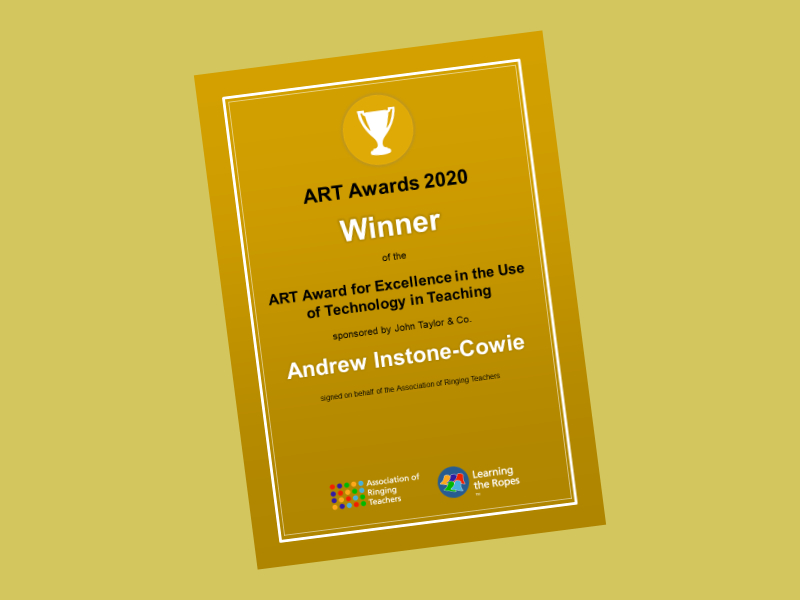The ART Award for Excellence in the use of Technology – Andrew Instone-Cowie
Background
Andrew Instone-Cowie has coordinated the development of the Liverpool Simulator Project which comprises a set of open source materials. The initial installation was at Liverpool Cathedral with other installations at:
- St Mary, Chirk (6)
- St John the Evangelist, Higham (6)
- St Margaret, Crick (8)
- Southwell Minster (12)
- St Mary the Virgin & St Peter
- Lois Weedon (6)
- Bremhill, St Martin (6)
Initial designs were produced in 2015 with a major revision first being released in 2018 (the Mk II system). Type 2 simulators are installed or under construction at:
- St Mary the Virgin & St Peter,
- Lois Weedon (6)
- Nantwich, St Mary (8)
- Hemingford Grey, St James (8)
- St Ives, All Saints (8)
- Hurst, St Nicholas (8)
- Bremhill, St Martin (6)
- Rusper, St Mary Magdelene (8).
The development has been co-ordinated by Andrew Instone-Cowie who has liaised with other sensor designers to develop this particular system. The designer has now done most of the work but continues to monitor and develop designs maybe once a week for a few hours. Andrew has designed and provided support for a professional system that can be installed at minimal cost, without regard for any personal financial reward. The system can subsequently be used to develop ringers in towers all over the country.
Achievements
Andrew reviewed the available sensor systems and identified the advantages and disadvantages of each and developed a sensor system which combines the best of these systems but also added further innovations. The technical ability to design the necessary circuit boards and to write easy to follow documentation for home constructors to follow was crucial. What makes all of this even more remarkable is that Andrew decided that it should all be open source, so that anyone can use the designs for the benefit of their towers and the exercise generally at minimal cost.He has been very helpful during the build of the system that is installed in Bremhill Church. He is not directly teaching ringers via this technology, but by making it freely available, more ringers are able to experience the advantages of a ringing simulator during their development and training.
Since the build of the Bremhill Church version of the Mk II simulator, the designs have developed further, allowing multiple computers to be used. This has been done in a modular way so that the additional functionality can be added to existing systems without rendering them obsolete.
The Type 2 Simulator now supports up to 16 concurrent Simulator PCs. This has been achieved by an additional board which can be added in a modular way to the original system allowing full flexibility.
Future Plans
Wider knowledge of the availability of a reasonably priced sensor package would enable more towers to avail themselves of simulator technology in their towers. Use of a simulator can assist development of ringing groups on a local and national level.
For further details please refer to the simulator web-site https://ringingsimulators.wordpress.com/ which Andrew maintains for the benefit of this project. The design files and extensive documentation is hosted on Github at https://github.com/Simulators/simulator-type2.
Sponsored by John Taylor & Co

